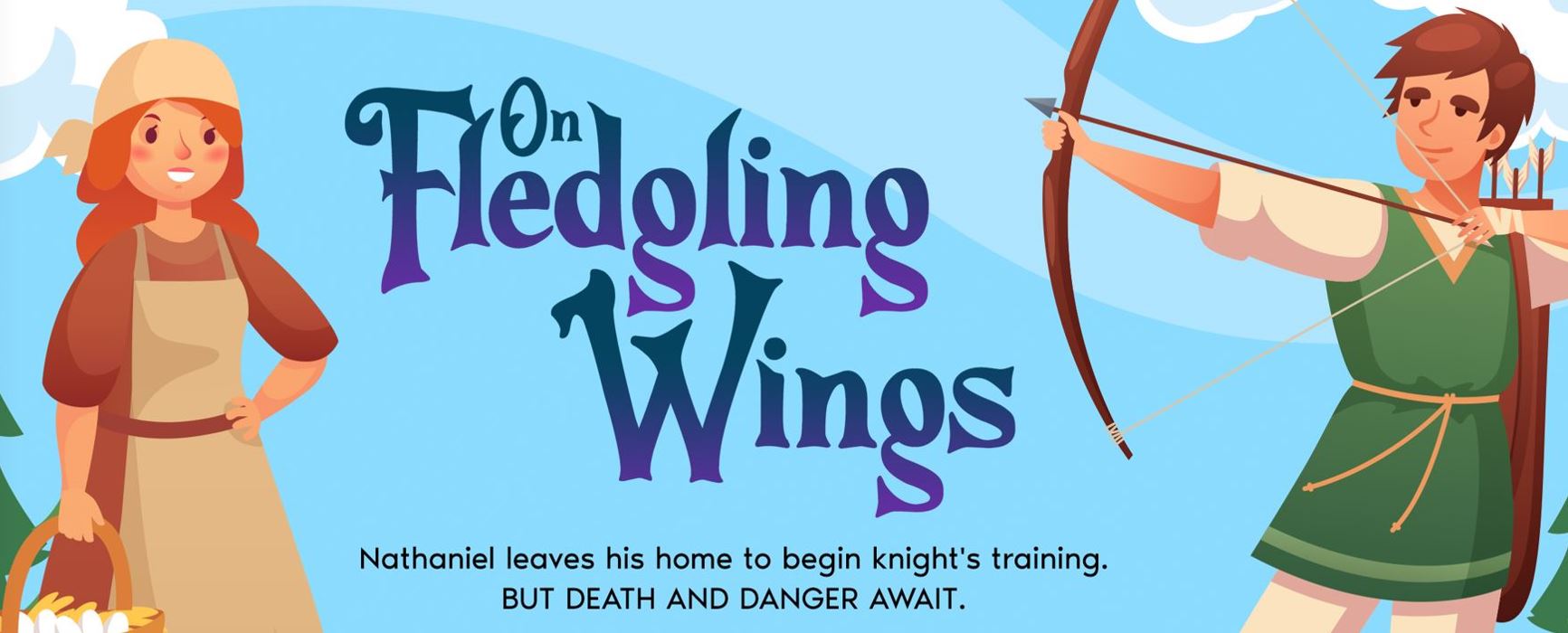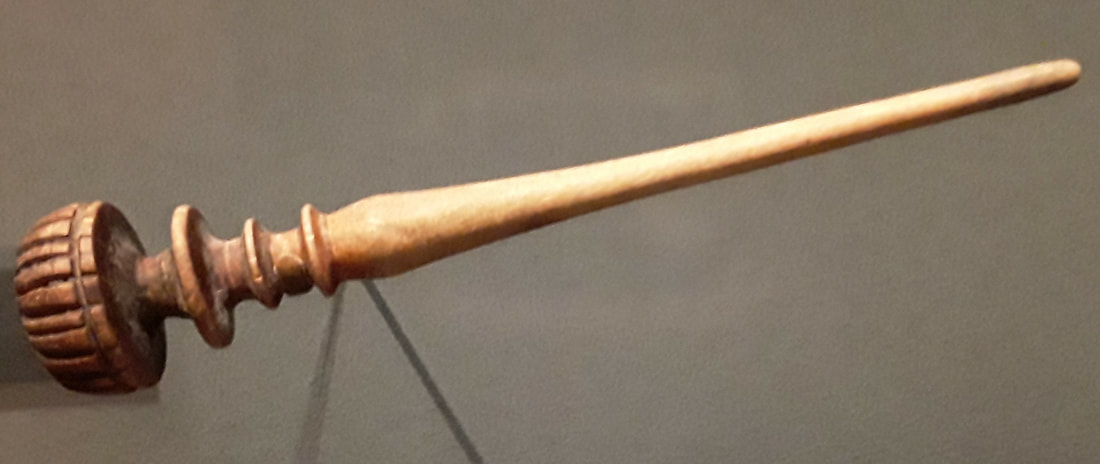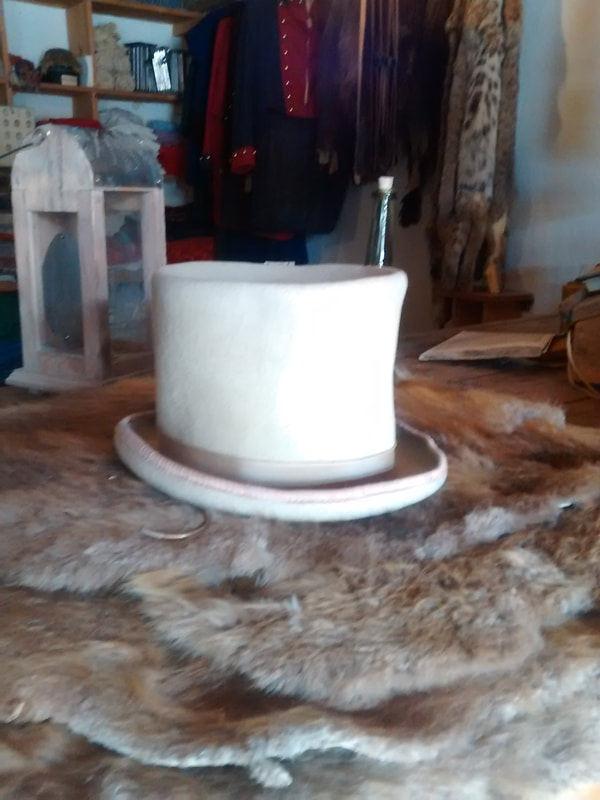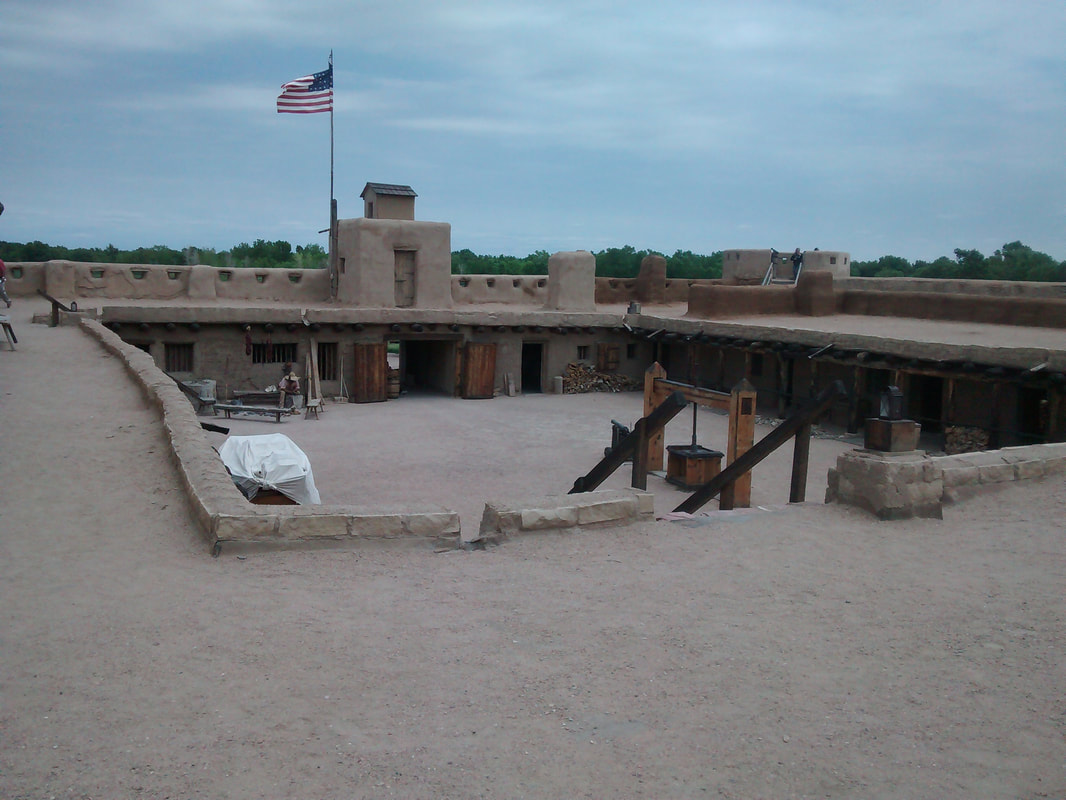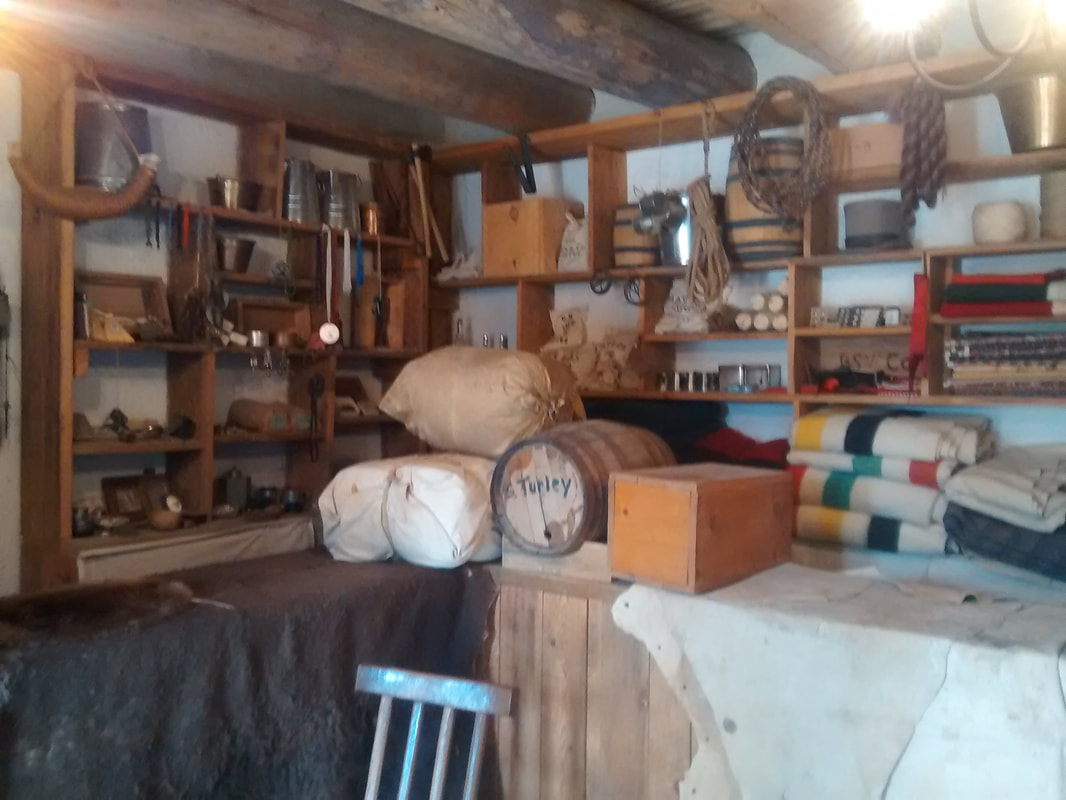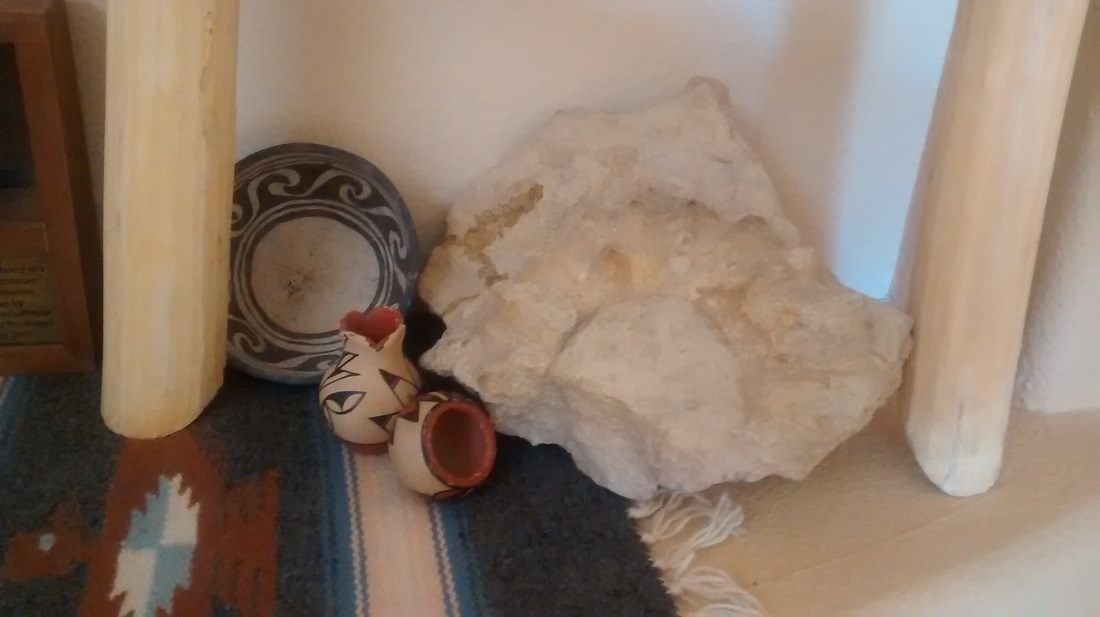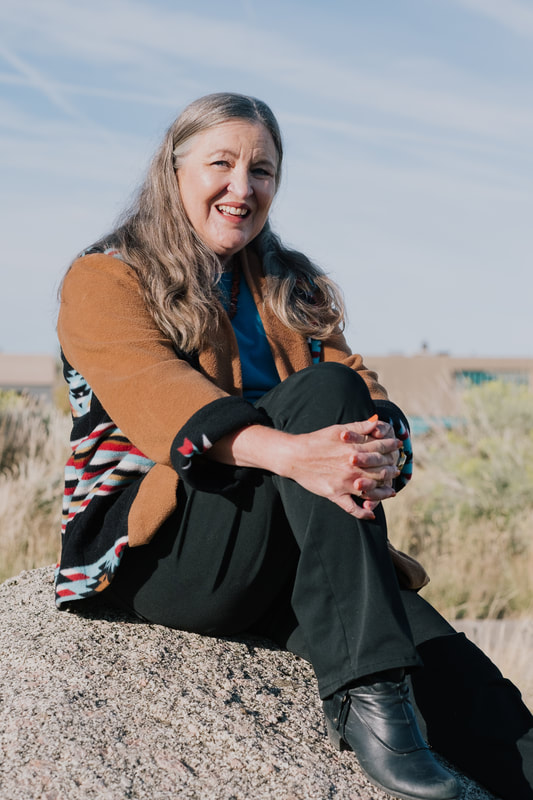
Elizabeth’s father was Pat Garret, a bartender, customs agent, and lawman who was sheriff of both Lincoln and Doña Ana Counties in New Mexico. He is most known for killing Billy the Kid, then coauthoring a book titled The Authentic Life of Billy, the Kid, which for decades was considered the most authoritative biography of the famous outlaw.
Pat Garret and his second wife, Apolinaria Gutierrez Garrett had eight children. Elizabeth, the third child, was born on October 9, 1885 in their home in Eagle Creek, outside the small community of Alto, in New Mexico’s Sierra Blanca Mountains. In the same year, the nearby town of Ruidoso was established.
 Mrs. Elizabeth Garrett and Teene, her seeing-eye dog, at her 'La Carita' home in Roswell, New Mexico. Courtesy of the Palace of the Governors Photo Archives (NMHM/DCA), 057207.
Mrs. Elizabeth Garrett and Teene, her seeing-eye dog, at her 'La Carita' home in Roswell, New Mexico. Courtesy of the Palace of the Governors Photo Archives (NMHM/DCA), 057207. Elizabeth composed and sang her own songs at performances around the state and the country. She once performed for the prisoners at New York’s infamous Sing Sing Prison. Her most memorable song is "O, Fair New Mexico," which she wrote in 1915. Two years later, New Mexico Governor Washington E. Lindsey asked her to sing it to the state legislature, who unanimously voted to make it the official state song the very next day.
Elizabeth Garrett died in Roswell on October 16, 1947 after falling while out on a walk.
O fair New Mexico
Where balmy breezes blow,
Kissed by the golden sunshine,
Is Nuevo Mejico.
Land of the Montezuma,
With fiery hearts aglow,
Land of the deeds historic,
Is Nuevo Mejico.
O, Fair New Mexico,
We love, we love you so,
Our hearts with pride o’reflow,
No matter where we go.
O, Fair New Mexico,
We love, we love you so,
The grandest state to know
New Mexico.
Rugged and high sierras,
With deep canyons below,
Dotted with fertile valleys,
Is Nuevo Mejico.
Fields full of sweet alfalfa,
Richest perfumes bestow,
State of apple blossoms,
Is Nuevo Mejico.
O, Fair New Mexico,
We love, we love you so,
Our hearts with pride o’reflow,
No matter where we go.
O, Fair New Mexico,
We love, we love you so,
The grandest state to know
New Mexico.
Days that are full of heart-dreams,
Nights when the moon hangs low;
Beaming its benedictions,
O’er Nuevo Mejico.
Land with its bright manana,
Coming through weal and woe;
State of esperanza,
Is Nuevo Mejico.
O, Fair New Mexico,
We love, we love you so,
Our hearts with pride o’reflow,
No matter where we go.
O, Fair New Mexico,
We love, we love you so,
The grandest state to know
New Mexico.
New Mexicans really like their music, and its legislators like to acknowledge that face. While "O, Fair New Mexico" remains the official state song, the state also has an official Spanish-language state song, a state bilingual song, a state ballad, and an official cowboy song.

Jennifer Bohnhoff is a native New Mexican and a former New Mexico history teacher. She lives in the mountains of central New Mexico, where she is presently writing the third in a trilogy of historical novels set in New Mexico during the Civil War. The first in the series, Where Duty Calls," will be published by Kinkajou Press in May 2022.
To read more about her and her writing, click here.

